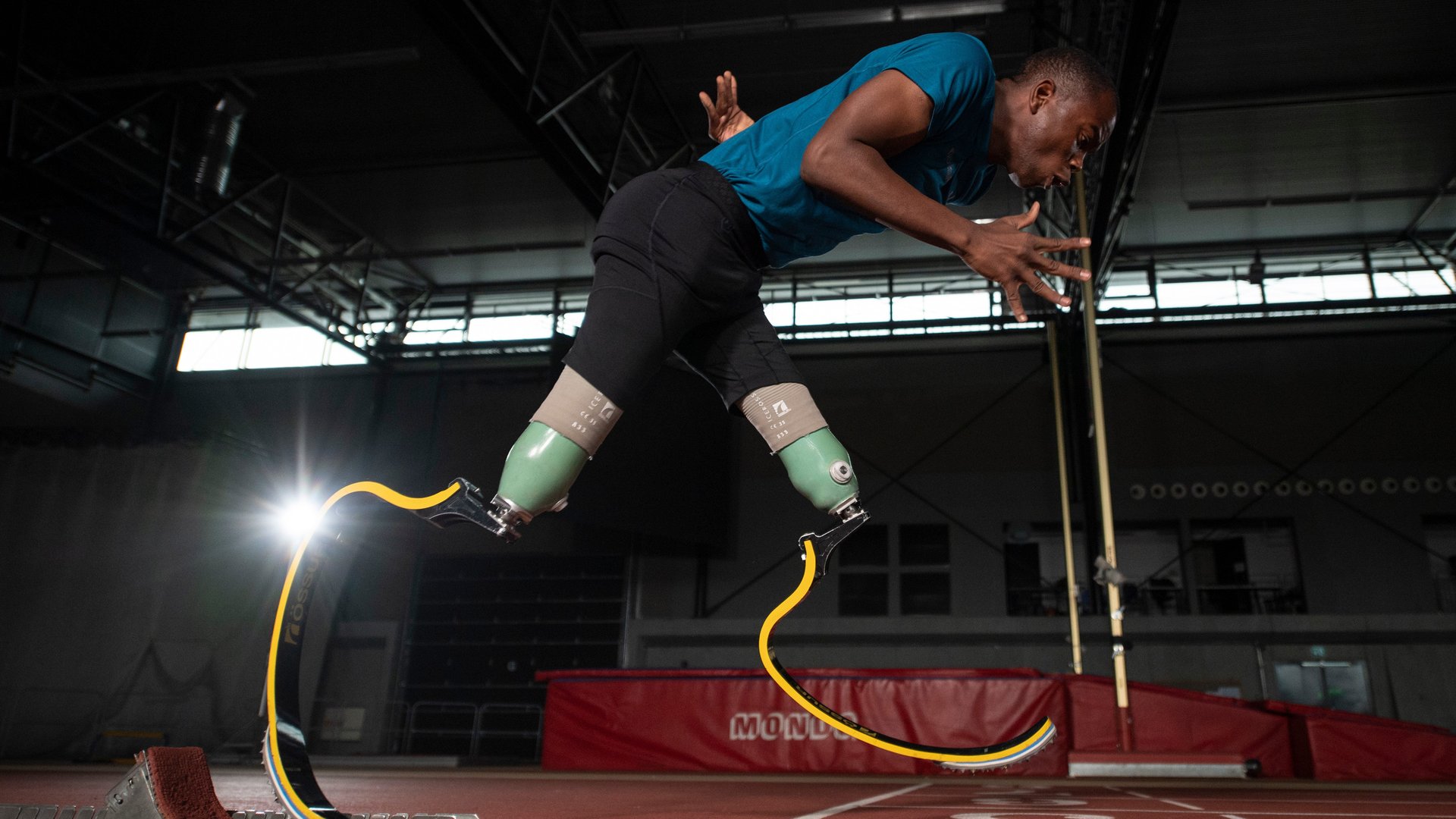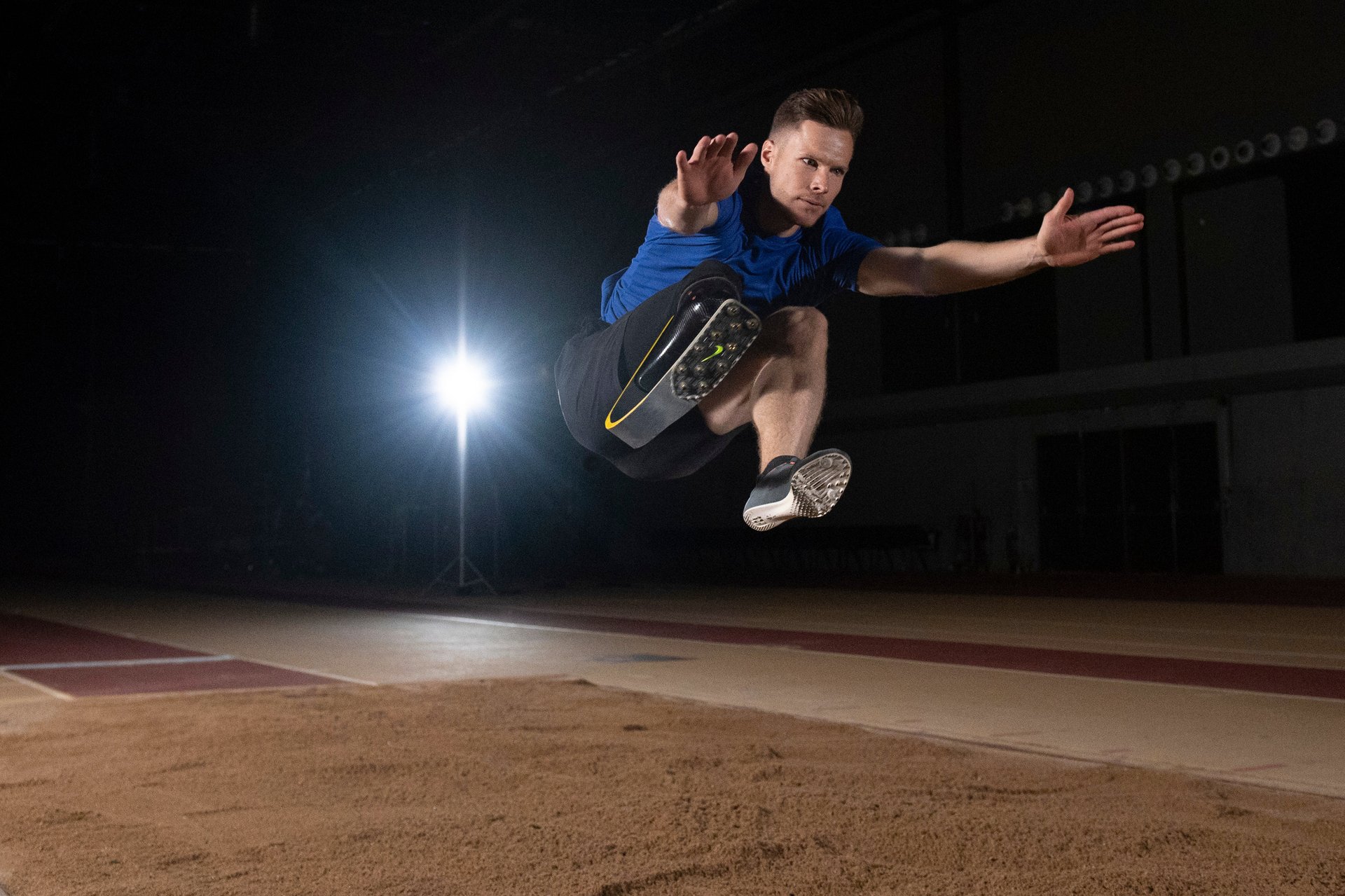An amputee’s company will help Paralympians run and jump in Tokyo
When the Paralympic Games begin in Tokyo on Aug. 24, more than a dozen athletes—sprinters, long-distance runners, cyclists, long-jumpers, table tennis players—will compete wearing prosthetics made by Össur, a company itself founded by an amputee.


When the Paralympic Games begin in Tokyo on Aug. 24, more than a dozen athletes—sprinters, long-distance runners, cyclists, long-jumpers, table tennis players—will compete wearing prosthetics made by Össur, a company itself founded by an amputee.
Started 50 years ago in Reykjavik, Össur manufactures braces, everyday prosthetics, and other kinds of orthopedic devices; in 2020, its sales totaled $630 million. But Össur also makes specialized prosthetic legs for competitive athletes, of the kind that have become so familiar to viewers everywhere since the success of the South African sprinter Oscar Pistorius: sleek, curved, carbon-fiber blades that look like they’ve arrived from the future.
Such blades have, over the last couple of decades, revolutionized the Paralympics. If Össur had been competing at the Rio Paralympics as a country rather than a manufacturer, for instance, it would have ranked ninth in the medal count. Athletes wearing Össur prosthetics won 12 gold, 17 silver, and 7 bronze medals in Rio.
🎧 For more intel on building prosthetic limbs, listen to the Quartz Obsession podcast episode on prosthetics. Or subscribe via: Apple Podcasts | Spotify | Google | Stitcher.
The contrast between the blades and the equipment that Paralympians used when they first raced each other could not be more stark. Those games were in Tokyo too, in 1964, but the athletes were on wheelchairs, and the races were called the “wheelchair dash.” Back then, if you didn’t want to use a wheelchair, your only option for a prosthesis was the rigid, clumsy kind modeled after human legs—not exactly made for sprinting. Then the blade was invented, replacing the wheelchair in many Paralympic events. And athletes owe it to the cheetah.
How the cheetah inspired Össur’s running blades
Össur didn’t start off making prosthetics. Its founder, a prosthetist named Össur Kristinsson, had undergone a leg amputation himself, and one of his first ambitions was to invent a soft lining of silicon to sit between the remnant of an amputated limb and the hard socket of the prosthesis. “We’d sell the liner to other companies that made prosthetics,” Edda Geirsdóttir, a vice-president at Ossur, said. “We dabbled in feet once, in the late 1990s, when we made a ‘daily foot'”—a prosthesis that resembled a human limb and was designed for daily wear.
In 1999, though, Össur went public, and the next year it acquired Flex-Foot. Set up in 1984, Flex-Foot was established by Van Phillips, an engineer who’d lost his left leg in a water-skiing accident. Looking to fabricate a prosthetic for himself, Phillips had studied how other legs in nature store energy and release it, and after exploring hundreds of models, he settled upon the C-shaped hind leg of the cheetah. “When the animal lands on the ground at 50 miles per hour,” Phillips said in one interview, “that long tendon is being stretched like a catapult. It’s the long tendinous fibers that propel the animal forward.”
How the science of athletic prosthetics has advanced
Össur’s acquisition of Flex-Foot, for $72 million, took it into the realm of sports prosthetics. Phillips’ blade was intended for a kind of all-purpose running, Geirsdóttir said, but Össur’s engineers “have evolved the design so that it has slightly different shapes for specific disciplines, such as sprinting, longer distance running, and long jump.”

Ever since Phillips invented it, the blade has been made of thin layers of carbon fiber compressed together to form a tough but flexible foot. The material of the blade has changed surprisingly little, and even the basic C-shape has only been tweaked to fit various kinds of sporting events.
For sprints, for example, engineers model the blade after the human leg in a state of plantar flexion, the toes pointed downward and the foot tensed—what Christophe Lecomte, Össur’s director of biomechanical solutions, calls the “aggressive shape.” For long jumps, the blade is strengthened so that, during a landing, it can withstand seven times an athlete’s body weight.
Over the years, Össur has been able to tailor blades to athletes more and more minutely. Runners, jumpers, and other athletes now go to Össur’s headquarters to have their gait analyzed by computers, their prosthetic limbs custom-fitted to their bodies, and the precise alignment of these limbs fine-tuned with the help of lasers. A blade also goes through intensive testing: 2 million cycles of tests, to be precise, with a weight of 300 kg atop it. “It’s like running a marathon a week for a year,” Geirsdóttir said.
In some ways, athletic prosthetics have almost become too good, to the point that their use in able-bodied events has become controversial. Pistorius made Olympic history in 2012, becoming the first amputee to take part in the Olympics. (He finished last in a semi-final.) More recently, though, the Court of Arbitration for Sport, a Geneva-based body, ruled that prosthetics give runners extra height and therefore an undue advantage over flesh-and-blood limbs, preventing athletes from trying to qualify for Tokyo.
Some of Össur everyday prosthetics now use microsensors and other electronics, but athletic competitions do not permit these additions. But on the horizon, Lecomte said, are the advantages of 3D printing, which can refine the fabrication of prosthetics to even finer levels. “We are not using this technology to manufacture sports products yet,” he said, “but it has helped us greatly during development and design.”
Össur blade’s aren’t just for competitive athletes; anyone can buy a blade for several thousand dollars, although the final price depends on a person’s prosthetist, “who makes a socket for the blade, and aligns it all, and gives clinical time and care,” Geirsdóttir said. In that context, she added, “it’s upsetting that many health insurers will reimburse a ‘daily foot’ but not a blade to live an active life. Especially for kids—because really, all kids want to do is play.”